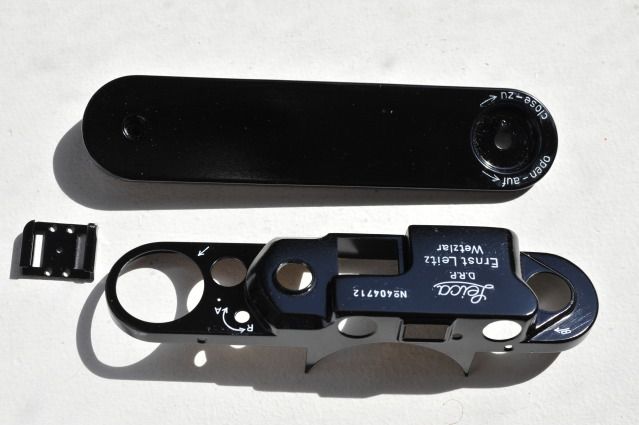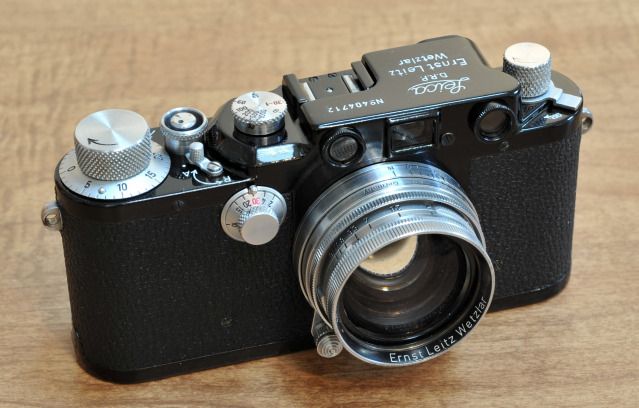Dez
Bodger Extraordinaire
Some while ago I bought a beater IIIC with a gummed-up shutter, ruined vulcanite, and very sorry-looking chrome. The plan was to repaint it and create a good looking black conversion. I finally got around to it a few days ago and found the necessary CLA quite easy and everything is functioning well. A replacement vulcanite sheet from Asahi fits beautifully and is easy to apply. But the paint is tricky, as anyone who has tried this knows well.
I stripped the chrome with hydrochloric acid (works great!) and anodized off the nickel using sulphuric acid in battery acid concentration, which is much less dangerous, and not as damaging to the brass. I applied a thin coat of an autmotive primer intended to work on steel and aluminum, with which I have had good luck before. This is a fairly robust matte black, and was suitable for the inside of the base plate. I then shot two thin coats of gloss black nitrocellulose paint. The painted parts look great, and the surface should be fairly tough.
The challenge is the engravings. They are fine and shallow, and this gets much worse with a few layers of paint. There is not much of a "tooth" to hold the white paint stick stuff that I am using to fill them. Also, the paint surface is extremely smooth. I know if I am careful and patient, I can fill the engravings so they look good, but I do not have any confidence in how long the filling will stay in them.
I have seen some very nice looking painted conversions on RFF. My question is whether anyone has tried shooting clearcoat over the surface after filling the engravings. I have tried to keep the total thickness reasonable, so I should not be causing fit problems, but I have never tried this before. Any suggestions?
Cheers,
Dez
I stripped the chrome with hydrochloric acid (works great!) and anodized off the nickel using sulphuric acid in battery acid concentration, which is much less dangerous, and not as damaging to the brass. I applied a thin coat of an autmotive primer intended to work on steel and aluminum, with which I have had good luck before. This is a fairly robust matte black, and was suitable for the inside of the base plate. I then shot two thin coats of gloss black nitrocellulose paint. The painted parts look great, and the surface should be fairly tough.
The challenge is the engravings. They are fine and shallow, and this gets much worse with a few layers of paint. There is not much of a "tooth" to hold the white paint stick stuff that I am using to fill them. Also, the paint surface is extremely smooth. I know if I am careful and patient, I can fill the engravings so they look good, but I do not have any confidence in how long the filling will stay in them.
I have seen some very nice looking painted conversions on RFF. My question is whether anyone has tried shooting clearcoat over the surface after filling the engravings. I have tried to keep the total thickness reasonable, so I should not be causing fit problems, but I have never tried this before. Any suggestions?
Cheers,
Dez



